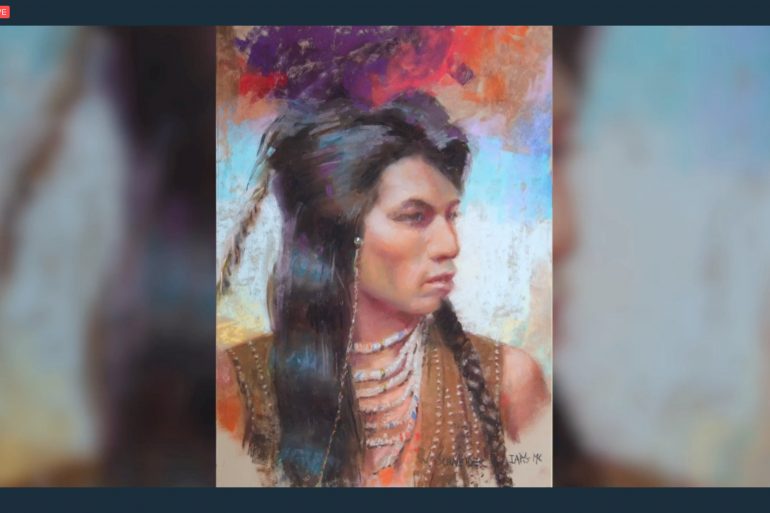
This post is also available in:


The second edition of Pastel Live, the exclusive event entirely dedicated to the art of pastel, is back as usual for the pre-event training day.
The goal of the day is to teach the basics of an artistic technique, in this case pastel, but the experience actually always turns out to be much more edifying than a simple introductory course. Indeed, it is inevitable to consider at the end of the day the amount of information, tips, anecdotes and suggestions received from the faculty members, who always offer new insights, even for those who already know pastel.
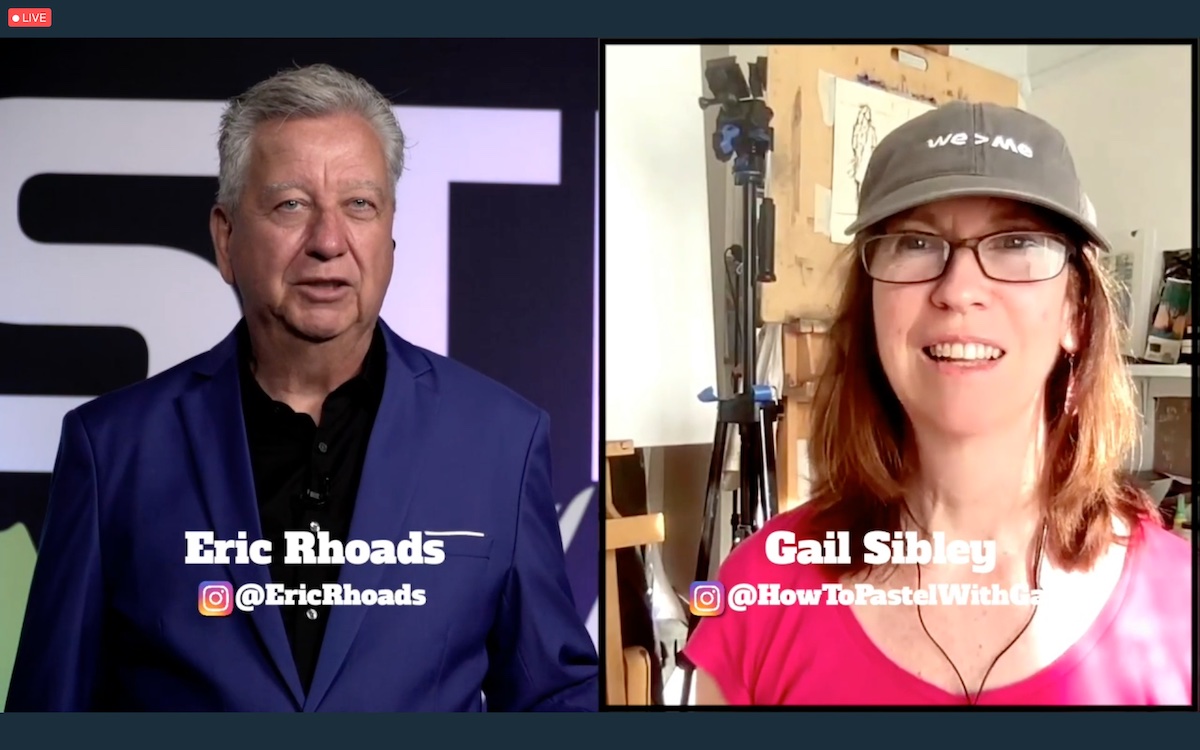
The credit for the enthusiasm of the participants and their participation, as always numerous even on the pre-event day, must be given to him: the frontman, the visionary creator whose goal is to build a Disneyland for artists, Eric Rhoads.
For the second edition of the event, which was strongly requested by the public during the pandemic, Eric Rhoads was joined by the overwhelming enthusiasm of Gail Sibley, artist, blogger and teacher as well as Editor-in-Chief of Pastel.Today, the new channel entirely dedicated to pastel. By subscribing -it’s totally free- to Pastel.Today the public will receive weekly newsletters that will update them on all pastel-related news: techniques, tips, artists and competitions. You can subscribe at the following link: https://pasteltoday.com/newsletter/
The enthusiasm of the audience was exuberant especially because of the participation of the faculty members : award-winning professionals who were given the task of putting under the magnifying glass a particular aspect, organizational or technical, related to pastel in all its forms of expression: landscape art, still life and portraiture
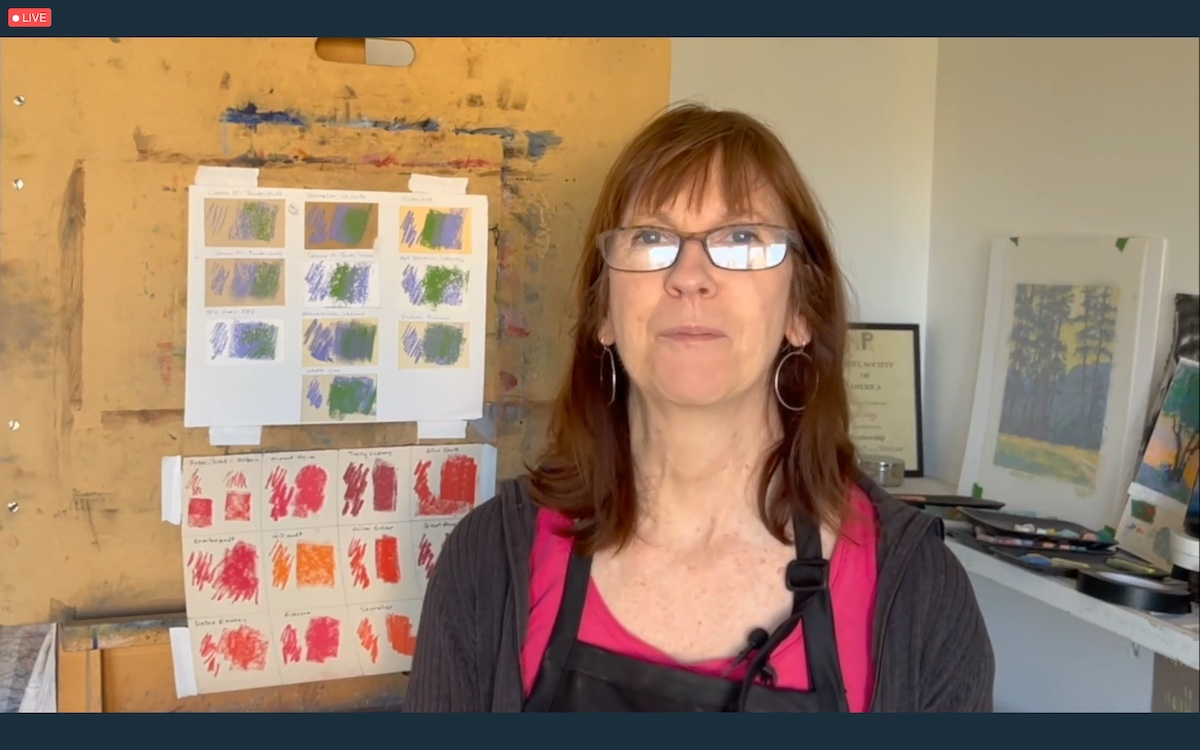
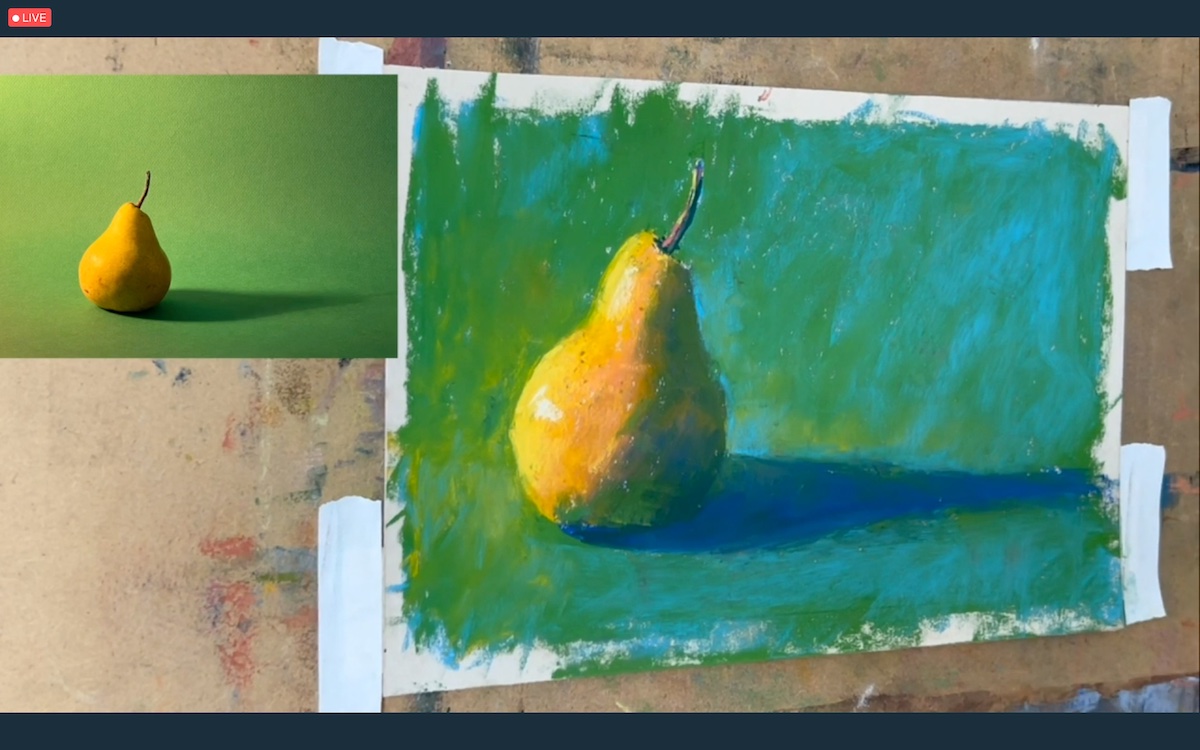
The enthusiasm and spontaneity perfectly rendered Gail Sibley’s love for pastel, the first faculty memeber to open the training day, who stated,” I can flirt with any other technique but I always come back to pastel in the end.”
Gail Sibley conducted two demonstration sessions in which she showcased her teaching skills. In the first she did a comparative session of the materials needed: pastels and paper, highlighting how using good quality materials is already a good starting point for those venturing into this technique. In the second demonstration session she did a still life session focused on the representation of a single object, a pear. Both the still life and the choice of an object -it is essential that the object is liked and intrigued you- are important for approaching pastel and painting more generally because they allow one to relate the effect of lights and its reflections on the object in space and the influence of the background in the realization of the composition. Among the various suggestions dispensed, the artist insisted on the importance of working vertically so as to encourage the precipitation of dust and to use personal protective equipment: liquid gloves, support sticks for spreading color and protective goggles for the dust released by the pastel. To approach still life, the artist also suggests making small pencil thumbnail in such a way as to assess the composition.
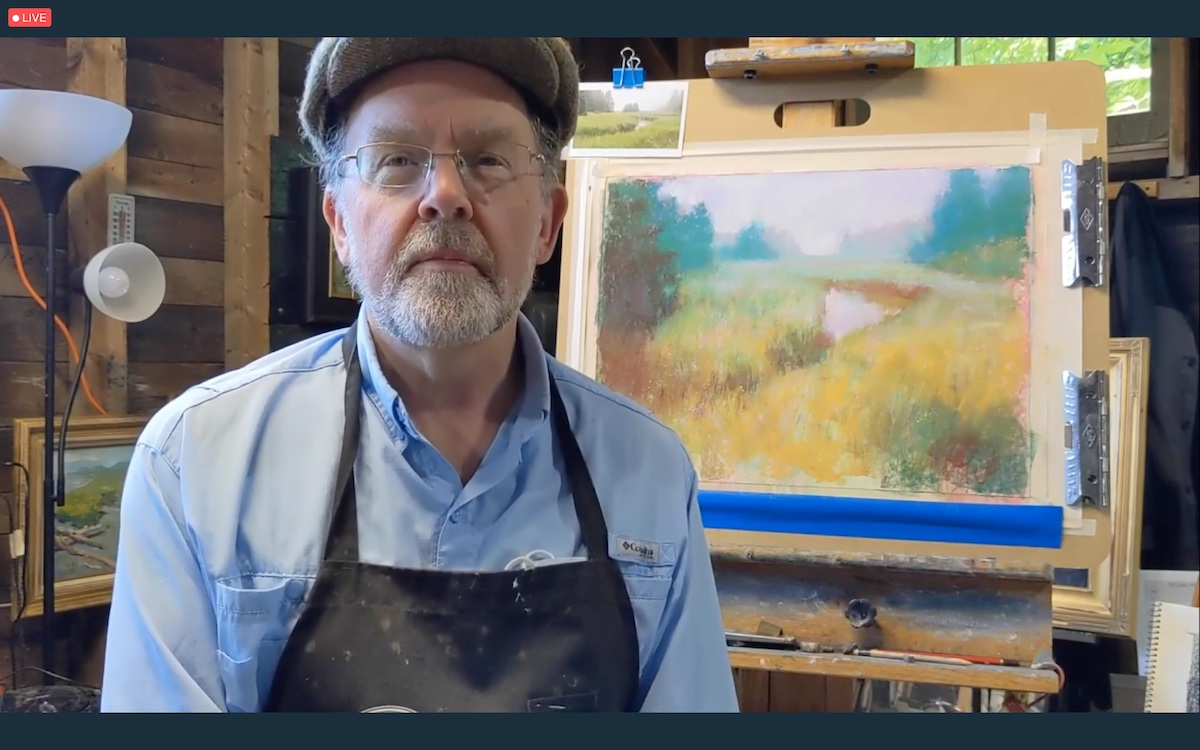
Plein air painting enthusiast Michael Chesley Johnson habitually prefers to highlight the mood a landscape brings to him rather than its details. To do this, the artist unveiled some techniques that allow for particular visual effects with a strong emotional impact. The theoretical session was followed by an interesting practical session in which proceeding from the creation of the background he derived the foreground images by dissolving the existing images with a brush or darkening the color tones with the use of fixative spray.
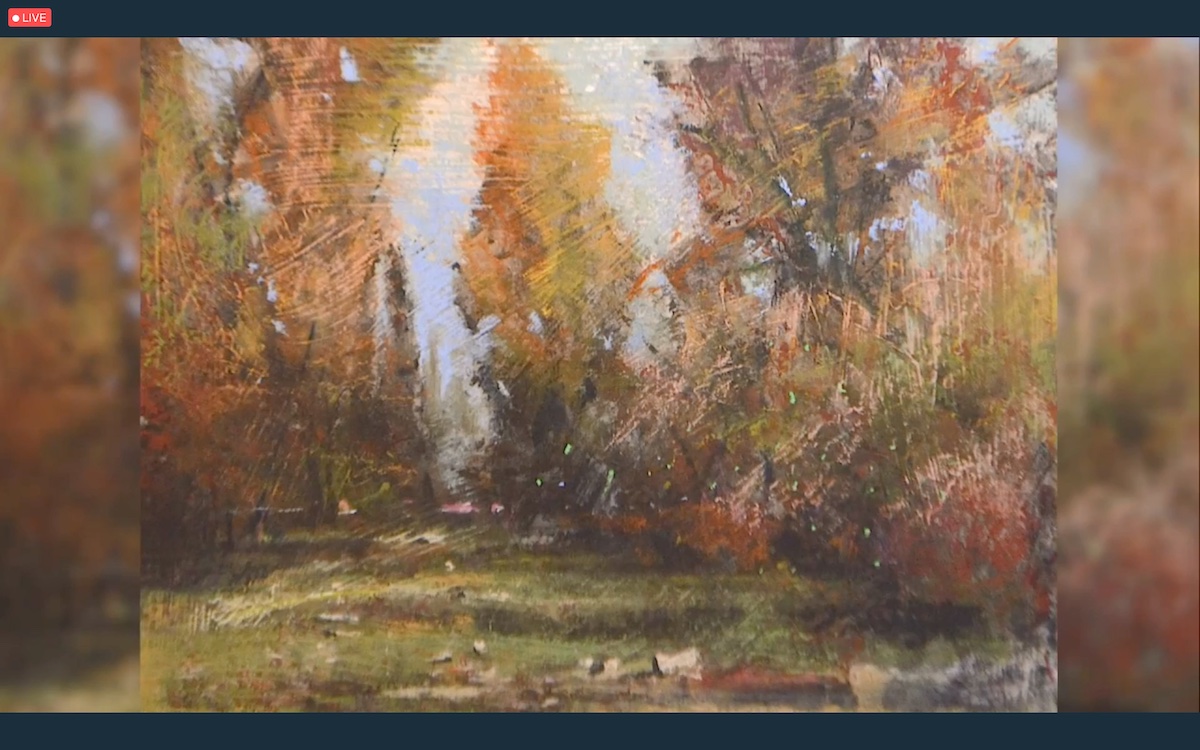
Values and composition are fundamental elements in the making of a painting, and it was Tom Christopher who illustrated how to approach these basic pillars of art. Renowned for his extraordinary ability to dramatically render common everyday scenes in which he combines realistic and abstract styles, Christopher revealed his personal way of proceeding in the study of composition. After making a tonal study with acrylic color, water and brush, the artist made the composition in pastel. With the use of fine pumice gel ,which provides the mordant for the pastel application, the artist made interesting textures that emphasized the three-dimensionality of the landscape, leaving the brushstrokes to direct the viewer’s gaze to the chosen visual area.
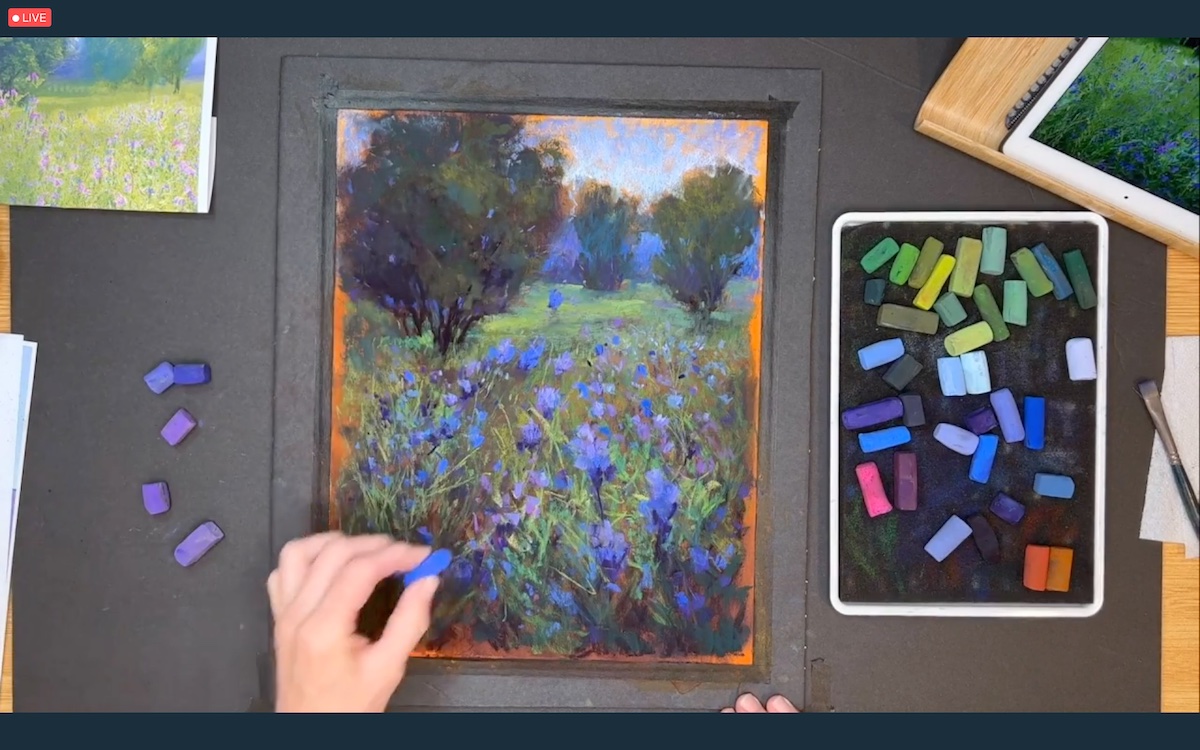
“Painting is easy when you know the rules,” said self-taught artist Susan Jenkins, founder of the Monet Café, her particular art studio with which she promised to share all that she has learned through years of study and practice. Through focused exercises Jenkins provided participants with a simplification of concepts related to color theory and optical illusion. Concepts that sometimes come across as hostile but that amplify the sense of depth and distance perceived within the composition. She particularly focused on the importance of color contrasts and color temperature: factors that play a key role in depth perception.
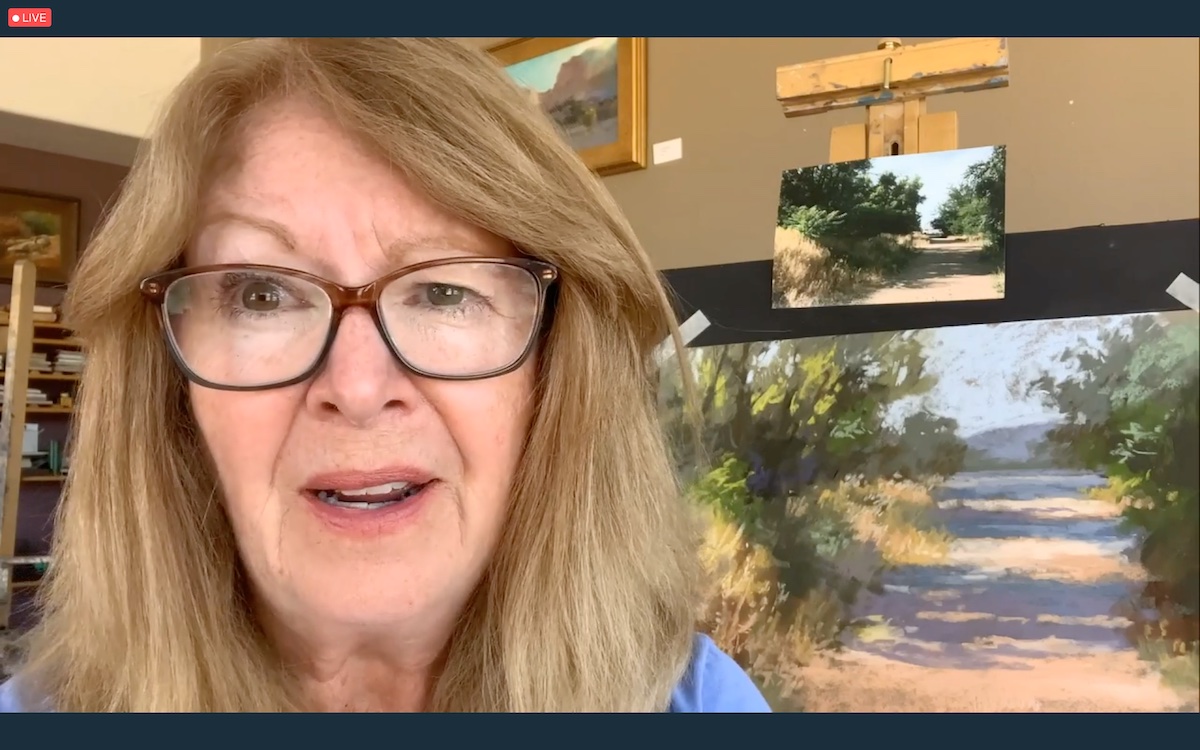
“Large forms are a mantra,” argues Christine Debrosky, who for her demo made, very quickly, an initial sketch in charcoal. Taking advantage of linear perspective, she simplified the shapes of the composition and fixed the tonal values. “Making the preparatory sketch is certainly not the interesting part of the painting process, but it is very useful because when the sketch works, the final composition works as well,” said the artist, who repeatedly stressed the importance of dwelling on the overall control of measurements and line directions. Debrosky insisted on the importance of pressure in the application of pastel color, which she lays directly on the sketch proceeding, even in the making of details, by large shapes.
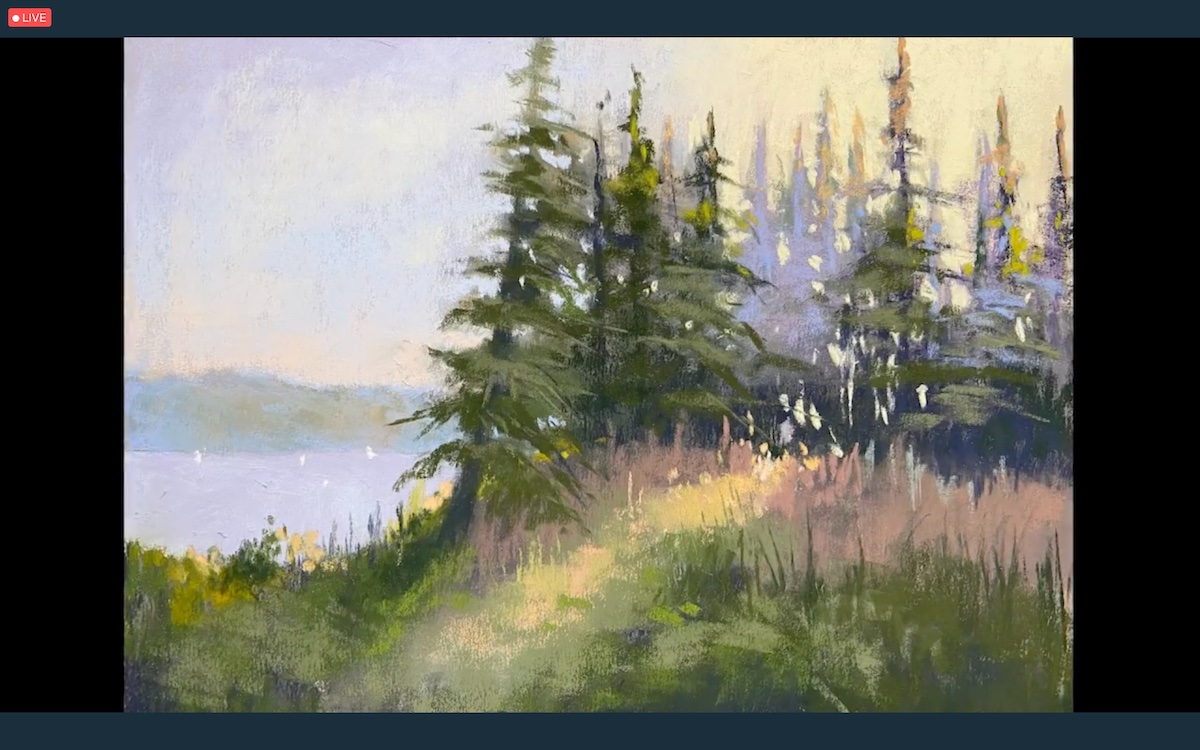
“It’s never too late to approach pastel,” declares Jane McGraw-Teubner, who began painting at age 50 and recently received one of America’s highest honors: the Eminent Pastelist Designation from the Pastel Society of America. For the educational day, McGraw-Teubner did a landscape demonstration based on underpanting about which she said, “You don’t have to erase underpainting is very beautiful to look at.”
According to McGraw-Teubner, it is essential in artistic composition to always be aware of the tonal value of colors, which are, along with color temperature, more important than the colors themselves. In executing the painting and to achieve interesting effects, she used a solvent that generally varies depending on the paper she decides to use.
Among the practical advice offered, the artist recommends observing the work days apart so as to have a fresh and analytical eye to be able to, if necessary , refine it.
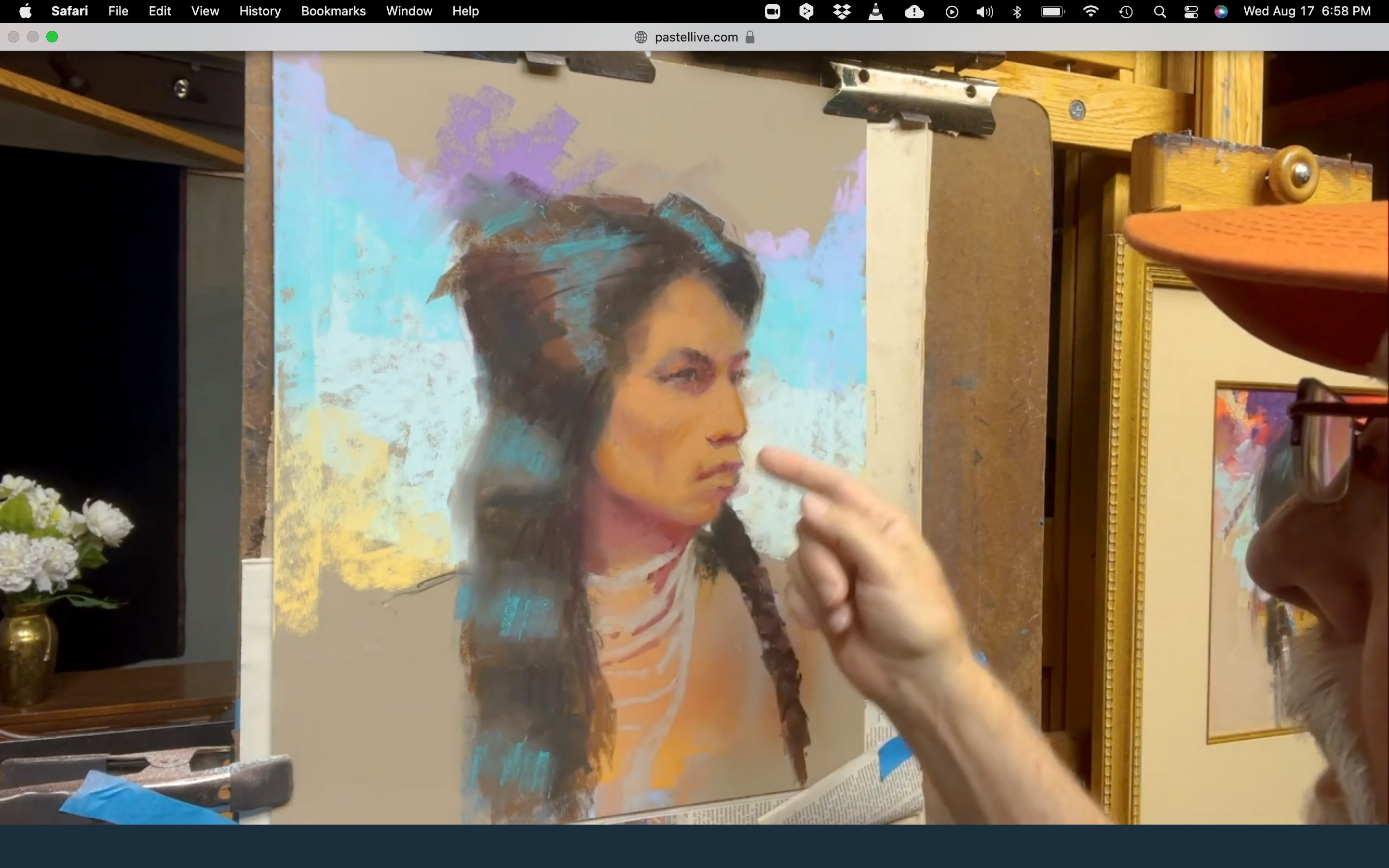
There was certainly no shortage at Pastel Live of a lesson on pastel applied to portraiture, and who better than William Schneider to star in this incredible demonstration session. In particular, Schneider’s demo focused on one of the most difficult parts of a portrait: the beginning.
In addition to the making of the portrait, it was an “enriching” session because his ability to teach precedes his reputation as a painter. Recognized, not surprisingly, as an Eminent Pastelist Designation by the Pastel Society of America, Schneider said there are five elements to consider in the making of a pictorial work: shapes (which are the drawing), values, color temperature, edges and composition. Of the five fundamentals of art Schneider highlighted the importance of drawing as the first factor and of which he said, “Drawing is nothing more then proportions.”
Pointing out the necessity in portraiture to continually check the proportions and relationships between the parts -otherwise you would get a wrong portrait- Schneider stated that in drawing the vertical measurements must be in scale with the horizontal ones.
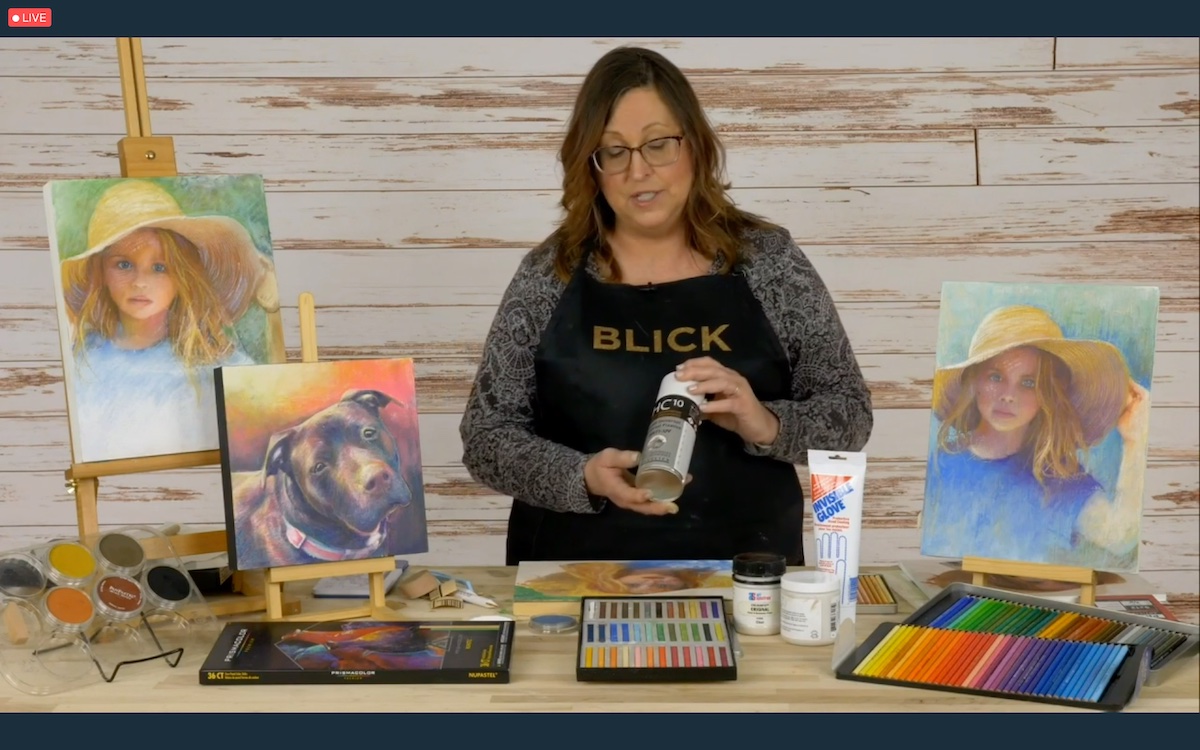
Materials are a very important aspect of both the approach to learning the technique and the rendering of the final composition. Pastel Live offers many insights into materials thanks to the event’s sponsors who offer participants not only the opportunity to purchase materials at special discounts, but also offer the chance to try out the materials suggested during the demos by conveniently sending test samples directly at home. Among the platinum sponsors of Streamline Publishing events, Blick Art Materials is always a one-stop shop for purchasing materials. For the day, it relied on the art practices and suggestions of Julie Swanson Davis, who in addition to demonstrating the latest in the market, she demonstrated how, with the use of a primer, it is possible to make a painting from the photographic medium that reworks as if it were a painting.
(on the title: William Schneider’s final demonstration work)
